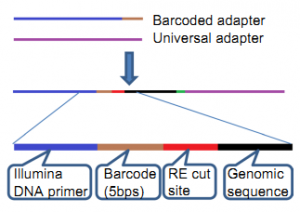|
Functional analysis of molecular interactions in synthetic auxin response circuits
Monday, 2016/10/10 | 08:18:04
|
|
Edith Pierre-Jerome, Britney L. Moss, Amy Lanctot, Amber Hageman, and Jennifer L. Nemhauser SignificanceAuxin-regulated transcription plays a role in almost every aspect of plant growth and development. Recent structural studies of domains from auxin-activated transcription factors and auxin-degraded repressors have raised fundamental questions about the protein complexes required for auxin response. Here, we leverage the power of a synthetic yeast system to identify and systematically characterize the simplest auxin response unit in the absence of the potentially confounding influence of other family members and interacting pathways. AbstractAuxin-regulated transcription pivots on the interaction between the AUXIN/INDOLE-3-ACETIC ACID (Aux/IAA) repressor proteins and the AUXIN RESPONSE FACTOR (ARF) transcription factors. Recent structural analyses of ARFs and Aux/IAAs have raised questions about the functional complexes driving auxin transcriptional responses. To parse the nature and significance of ARF–DNA and ARF–Aux/IAA interactions, we analyzed structure-guided variants of synthetic auxin response circuits in the budding yeast Saccharomyces cerevisiae. Our analysis revealed that promoter architecture could specify ARF activity and that ARF19 required dimerization at two distinct domains for full transcriptional activation. In addition, monomeric Aux/IAAs were able to repress ARF activity in both yeast and plants. This systematic, quantitative structure-function analysis identified a minimal complex—comprising a single Aux/IAA repressing a pair of dimerized ARFs—sufficient for auxin-induced transcription.
See: http://www.pnas.org/content/113/40/11354.abstract.html?etoc PNAS October 4 2016; vol.113; no.40: 11354–11359
Fig. 2. ARFs activate as dimers. (A) ARF19 requires an intact PB1 domain for full activity. Activation of the P3(2x)::Venus fluorescent reporter by ARF19 variants in yeast was measured using flow cytometry. The data are shown as median values, with black horizontal bars demarcating 95% confidence intervals around the median. DB, DNA binding; DD, dimerization domain; MR, middle region; PB1, C-terminal interaction domain. See Table S1 for specific residues that were mutated in each domain. The diminished activity of the db1, dd1, and ok ARF19 mutant variants is not due to decreased protein levels (Fig. S2A). (B) PB1 mutations decrease DNA binding by ARF19. A ChIP assay was performed on 4×FLAG-ARF19 WT, double PB1 (ok), and DNA-binding mutant (db1) at the P3(2x) locus. Results from three independent replicates are shown normalized to the enrichment of the wild-type ARF19. Error bars represent SE. Relative activity of FLAG-tagged ARFs was similar to untagged strains (Fig. S2B). (C) Activity of ARF19 single PB1 mutants is rescued by coexpressing mutants with complementary interfaces to allow dimerization in the PB1 domain (D = k + o). The data are shown as median values, with black horizontal bars demarcating 95% confidence intervals around the median. |
|
|
|
[ Other News ]___________________________________________________
|


 Curently online :
Curently online :
 Total visitors :
Total visitors :
(35).png)



















